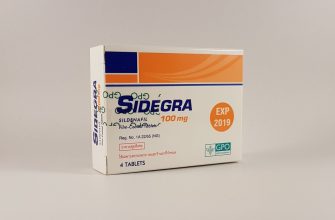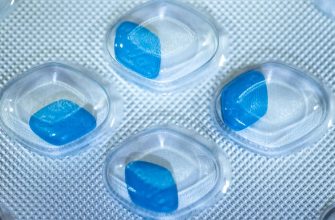No, there isn’t a single “female Viagra” approved by the FDA. However, there is a medication specifically addressing female sexual dysfunction. This drug, flibanserin, targets hypoactive sexual desire disorder (HSDD) in premenopausal women. It works differently than Viagra, focusing on neurotransmitter balance rather than blood flow.
Flibanserin requires a prescription and isn’t a quick fix. Doctors carefully assess individual suitability, considering potential side effects like dizziness and nausea. Open communication with your physician is crucial for determining if flibanserin is the right choice for you and managing any potential side effects. They’ll discuss your medical history and other medications to ensure safe usage.
Remember: Flibanserin is not suitable for all women. It’s vital to explore various avenues for addressing sexual dysfunction with your healthcare provider. This could involve lifestyle adjustments, therapy, or exploring other potential treatment options they may recommend. The information here does not replace a consultation with a medical professional.
Always discuss any health concerns or medication choices with your doctor before starting any new treatment. They can provide tailored advice and monitor your progress. Your well-being is paramount.
- Female Viagra FDA Approved: A Comprehensive Guide
- What is Female Viagra and How Does it Work?
- Understanding Flibanserin’s Mechanism
- Important Considerations
- Alternative Treatments
- Is There an FDA-Approved “Female Viagra”? Understanding the Current Status.
- Understanding the Differences Between Flibanserin (Addyi) and Other Treatments
- Potential Side Effects and Risks Associated with Flibanserin.
- Who is a Good Candidate for Flibanserin (Addyi)?
- Where to Get Flibanserin and What to Expect During Treatment.
- Important Considerations and Consultations with Healthcare Professionals.
- Understanding Your Medical History
- Addressing Specific Concerns
- Exploring Alternative Approaches
- Regular Follow-Up
- Seeking Second Opinions
- Finding Qualified Professionals
Female Viagra FDA Approved: A Comprehensive Guide
No drug is currently FDA-approved as “female Viagra.” However, several medications address specific aspects of female sexual dysfunction. Let’s explore them.
Flibanserin (Addyi): This medication targets low sexual desire in premenopausal women. It requires a prescription and carries potential side effects including dizziness, nausea, and fainting. Your doctor can discuss if it’s appropriate for you.
Important Note: Addyi interacts with alcohol and certain medications; adhering strictly to prescribed usage is critical. Discuss potential interactions with your physician before starting this medication.
Other Options: Beyond Addyi, various treatments exist for different types of female sexual dysfunction. These include topical creams, hormonal therapies, and counseling. Addressing underlying medical conditions, such as anxiety or depression, can also significantly improve sexual function.
Finding the Right Treatment: Open communication with your doctor is paramount. Describe your symptoms clearly and honestly to receive the most suitable treatment plan. Your doctor will conduct a thorough assessment before recommending any medication or therapy. This ensures your safety and the effectiveness of the treatment.
Next Steps: Schedule an appointment with your gynecologist or a healthcare professional specializing in sexual health. They can guide you through available options and help you find the most effective solution to address your specific needs.
What is Female Viagra and How Does it Work?
There is currently no FDA-approved drug specifically called “Female Viagra.” However, the drug flibanserin (brand name Addyi) is approved to treat hypoactive sexual desire disorder (HSDD) in premenopausal women. It’s crucial to understand that this isn’t a “magic pill” that instantly increases libido.
Understanding Flibanserin’s Mechanism
Flibanserin affects brain chemistry, specifically serotonin, dopamine, and norepinephrine levels. These neurotransmitters play a role in sexual desire. By adjusting their balance, flibanserin aims to improve sexual desire in women experiencing HSDD.
Important Considerations
Dosage: Flibanserin is taken daily at a specific dosage, and it’s essential to follow your doctor’s instructions precisely. Side effects: Common side effects can include dizziness, nausea, and sleepiness. Interactions: It’s crucial to disclose all medications you’re taking to your doctor, as flibanserin can interact with other drugs. Consult your physician before starting flibanserin or any other medication for sexual dysfunction.
Alternative Treatments
Other options for addressing low libido include counseling, therapy, and lifestyle changes such as improving sleep and managing stress. Your doctor can help determine the most suitable approach based on your individual circumstances.
Is There an FDA-Approved “Female Viagra”? Understanding the Current Status.
No, there isn’t a drug approved by the FDA specifically marketed as “female Viagra.” The term is a colloquialism for medications addressing female sexual dysfunction.
Flibanserin (Addyi) received FDA approval in 2015 for premenopausal women with hypoactive sexual desire disorder (HSDD). It’s important to note this drug targets low libido, not arousal or orgasm issues. Addyi’s efficacy is debated, and it carries potential side effects including dizziness and low blood pressure. Doctors carefully assess suitability due to potential drug interactions.
Other treatments exist for various aspects of female sexual dysfunction. These include medications for hormone imbalances, treatments for vaginal dryness, and counseling to address psychological factors. Many options exist, but the right approach depends significantly on individual circumstances and the specific nature of the sexual dysfunction.
Consult a healthcare provider for accurate diagnosis and personalized recommendations. Self-treating is risky. A medical professional can discuss available treatment options, assess potential risks and benefits, and ensure safe and effective management of female sexual dysfunction.
Understanding the Differences Between Flibanserin (Addyi) and Other Treatments
Flibanserin (Addyi) differs significantly from other treatments for Hypoactive Sexual Desire Disorder (HSDD) in women. Unlike topical creams or medications addressing blood flow, Addyi targets brain chemistry.
Specifically, Addyi works by affecting serotonin, dopamine, and norepinephrine levels in the brain, which influence sexual desire. This contrasts sharply with treatments that focus on physical aspects of sexual response.
Here’s a table summarizing key differences:
| Treatment Type | Mechanism of Action | Administration | Side Effects |
|---|---|---|---|
| Flibanserin (Addyi) | Affects brain neurotransmitters (serotonin, dopamine, norepinephrine) | Oral daily pill | Drowsiness, nausea, dizziness, low blood pressure |
| Testosterone Therapy (for some women) | Increases testosterone levels | Patches, gels, injections | Acne, hair growth, menstrual irregularities |
| Other medications (off-label use) | Varies widely, depending on the medication | Oral, topical, or injections | Varies widely |
It’s crucial to consult a healthcare professional to discuss your specific situation and determine the most appropriate treatment for you. They can assess your individual needs and medical history to help select the best option, considering potential benefits and risks.
Remember, Addyi requires daily use for continued benefit, unlike some other treatments that may be used on an as-needed basis. Also, alcohol consumption is strictly prohibited while taking Addyi due to increased risk of low blood pressure.
Potential Side Effects and Risks Associated with Flibanserin.
Flibanserin, while approved for treating hypoactive sexual desire disorder (HSDD) in premenopausal women, carries potential side effects. Drowsiness is a common one, so avoid operating machinery or driving after taking it.
Nausea and dizziness are also reported. These usually lessen with continued use, but inform your doctor if they persist or worsen.
Low blood pressure is another possible side effect. This is especially important for those with pre-existing low blood pressure or taking medications that lower blood pressure. Your doctor should carefully monitor your blood pressure.
Flibanserin can interact with certain medications, notably alcohol and other central nervous system depressants. Avoid alcohol consumption while taking this medication to minimize the risk of increased drowsiness or dizziness.
Serious allergic reactions, though rare, can occur. Seek immediate medical attention if you experience symptoms like rash, swelling, or difficulty breathing.
Flibanserin’s efficacy varies. It’s crucial to have open communication with your doctor about its effects on your sexual desire and overall well-being. They can assess its effectiveness for you and make adjustments to your treatment plan as needed.
Who is a Good Candidate for Flibanserin (Addyi)?
Flibanserin is best suited for premenopausal women with acquired, generalized hypoactive sexual desire disorder (HSDD). This means the low desire is a recent development, not lifelong, and affects all aspects of their sex life, not just with a particular partner.
- Diagnosis is key: A proper diagnosis by a healthcare professional is crucial before considering Flibanserin. Self-diagnosis is unreliable.
- Premenopausal women only: The medication is not approved for postmenopausal women or men.
- Specific symptoms: You need consistently low sexual desire that causes significant distress or relationship problems. Occasional low libido isn’t enough.
- Rule out other causes: Underlying medical or psychological conditions affecting libido should be ruled out before starting Flibanserin. Your doctor will investigate other potential factors.
- Realistic expectations: Flibanserin won’t work for everyone. It’s not a quick fix and may not significantly increase desire for all users.
Before starting Flibanserin, discuss potential side effects, such as nausea, dizziness, and fainting, with your doctor. They can help you manage these and determine if Flibanserin is the right treatment option for you.
- Open Communication: Honest conversation with your doctor about your medical history and sexual concerns is paramount.
- Medication Interactions: Inform your doctor about all medications and supplements you take to avoid dangerous interactions.
- Alcohol Avoidance: Avoid alcohol consumption while taking Flibanserin due to potential interactions and increased side effects.
- Regular Check-ups: Maintain regular follow-up appointments with your doctor to monitor your response to the medication and address any concerns.
Where to Get Flibanserin and What to Expect During Treatment.
You can obtain flibanserin only with a prescription from your doctor. It’s crucial to discuss your medical history and current medications to ensure flibanserin is safe for you.
Expect your doctor to conduct a thorough evaluation before prescribing. This may involve a physical exam and a discussion of your sexual history and any other relevant health concerns. They will assess whether flibanserin is appropriate for your specific situation.
Flibanserin is dispensed at pharmacies, just like other prescription medications. You’ll need to present your valid prescription to receive it.
During treatment, be aware of possible side effects. These can include drowsiness, nausea, and dizziness. It’s important to follow your doctor’s instructions carefully regarding dosage and timing. Many women experience a gradual improvement in sexual desire over time, not an immediate effect.
Regular check-ups with your doctor are recommended to monitor your progress and address any side effects or concerns. Open communication with your healthcare provider is key for a successful treatment outcome.
Remember, flibanserin is not a quick fix. It works best when used consistently as prescribed. Patience and realistic expectations contribute significantly to a positive experience.
Important Considerations and Consultations with Healthcare Professionals.
Always discuss potential treatments with your doctor before starting any new medication, including those for sexual dysfunction. This is paramount for your safety and health.
Understanding Your Medical History
- Inform your physician about all medications you currently take, including over-the-counter drugs, supplements, and herbal remedies. Interactions can occur.
- Describe any pre-existing medical conditions, such as heart problems, high blood pressure, or liver disease. These conditions may influence treatment choices.
- Discuss any previous adverse reactions to medications. This helps your doctor select the safest and most appropriate option.
Addressing Specific Concerns
Openly communicate your concerns and expectations regarding treatment. This includes discussing the desired outcomes and any potential side effects you’re worried about.
Exploring Alternative Approaches
- Explore non-pharmaceutical options with your doctor, such as lifestyle changes or counseling, to address underlying issues contributing to sexual dysfunction.
- Discuss the potential benefits and risks of different treatment options, allowing you to make an informed decision.
- Ask questions until you fully understand the treatment plan, potential side effects, and the expected results.
Regular Follow-Up
Schedule regular check-ups with your doctor to monitor your progress and address any emerging issues. This allows for timely adjustments to your treatment plan, if needed.
Seeking Second Opinions
Don’t hesitate to seek a second opinion from another healthcare professional if you have any doubts or uncertainties. A second perspective can provide added reassurance and clarity.
Finding Qualified Professionals
Locate qualified healthcare providers experienced in treating female sexual dysfunction. Look for doctors with relevant expertise and a good patient reputation.






